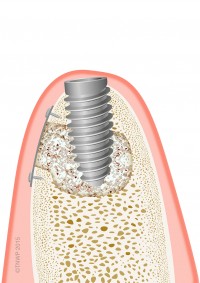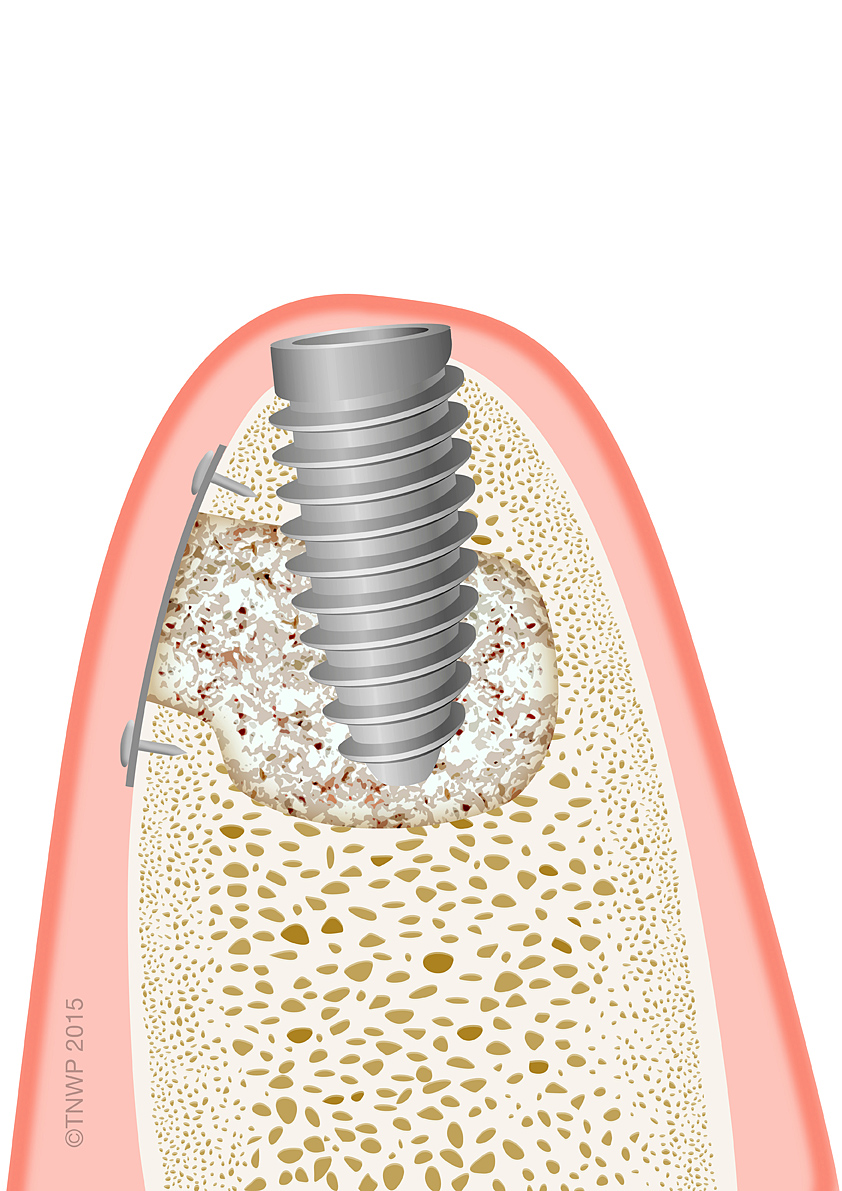
Have I got enough bone for teeth implants?
This article has been written by Dr Colin Neil, principal dentist at Confident Dental Implants, Stroud.
A dental implant is inserted into the jawbone to replace a missing tooth root and is usually made of titanium, with a thread pattern and a tapered shape. The implant supports a cosmetic crown that looks and feels like a real tooth. One of the key requirements for dental implant treatment is having enough bone in your jaw. The success of a tooth implant is partly dependent upon the foundation of bone that will support it. A solid, reliable base is needed to anchor the implant.
Insufficient bone volume or quality should not prevent most people from having dental implants. There are augmentation procedures available to rebuild bone. If your bone volume needs to be increased, it is well worth the extra time and effort involved. A successful bone graft allows your jaw to be strong enough to support your dental implants and will greatly improve the outcome of the implants placed. 
Contents
- How has my bone been lost?
- Why is sufficient bone needed for implant placement?
- How is bone evaluated before implant placement?
- If I don't have enough bone, what can be done?
- Where does the extra bone come from?
- Does bone grafting affect the duration of dental implant treatment?
- Successful bone grafting outcome
How has my bone been lost?
Bone can be lost when it is not in regular use or as a result of an infection or trauma. A natural process called atrophy, or resorption, can result in progressive bone loss or shrinkage. This is due to the lack of chewing stimulation when a gap is left, after a tooth has been lost. Resorption also occurs with natural ageing, injury, gum (periodontal) disease and wearing a conventional denture. The pressure of a denture on the gums during chewing reduces the blood supply, which can also increase the rate of bone loss.
Why is sufficient bone needed for implant placement?
If the bone in your jaw is not deep or wide enough, you may need bone grafting before dental implants are placed. Chewing is a powerful action and can exert a lot of pressure on the jaw. Implants replacing missing teeth need to be large enough to withstand the forces of chewing and there needs to be enough bone to support the size of implant. If placed into insufficient bone, then the implant may fail.
How is bone evaluated before implant placement?
A clinical examination of your mouth and radiographs will allow your dentist to assess the bone. In some cases, cone beam computed tomography (CBCT) will be prescribed to evaluate and measure the amount of bone in the jaw. A CBCT scan uses advanced X-ray techniques and generates a 3D image of the jawbone. It provides information such as bone height, width, density and shape. It also reveals the proximity of vital structures like nerves, blood vessels and the maxillary sinus.
If I don’t have enough bone, what can be done?
If your dentist advises that you don’t have enough bone to support an implant, then you may be able to have it built up. Bone augmentation is a term that covers a variety of procedures that ‘build’ bone. Your dentist will choose a method appropriate to the type, location and number of implants to be used.
Most bone augmentation procedures involve the use of bone grafts. Grafting techniques involve adding bone to the jaw. Grafts can be used to provide a firm base to place an implant or implants. See the types of bone grafting techniques available.
Where does the extra bone come from?
Bone grafts can be synthetic, animal or human in origin:
Autograft – For many clinicians it is considered the ‘gold standard’ for a graft to use bone taken from the patient. It will most likely come from behind the back teeth in the lower jaw or from the chin. Sometimes it is taken from the hip or shinbone (tibia).
Allograft - This is human bone obtained from a licensed tissue bank, rather than from the patient themself.
Xenografts - There are bone grafts taken from animal sources, such as bovine (derived from cow) or porcine (derived from pig).
Alloplastic grafts – These grafts are man-made from synthetic materials, the properties of which mimic natural bone.
All the grafting materials provide a scaffold into which your new bone will grow. Many implant dentists will also use a supplementary technique called ‘guided bone regeneration’ (GBR). This is where a barrier membrane is inserted between the slow-moving bone cells that have been placed as a graft and the faster growing soft tissue cells of the patient’s surrounding natural gum. The barrier membrane gives the bone cells time to grow and fill the required area.
Does bone grafting affect the duration of dental implant treatment?
Minor bone grafting can be carried out on the same day as the implant placement. Typically, bone grafting is performed months before implant insertion and it will usually increase the length of time your treatment will take.
In cases where the bone grafting required is more extensive, implants will be placed only after the grafted bone has fused (osseointegrated) with the existing bone. After a graft, you can expect to wait four to six months for the bone to build successfully. Timings will also depend on the location of the graft and the density of the bone. When appropriate, temporary teeth, such as a denture or bridge can be worn, so you don’t have a gap while you wait for the new bone to grow.
Successful bone grafting outcome
The key to successful bone grafting treatment is to find an implant dentist with the relevant training and surgical experience. Don’t be afraid to ask how many bone grafting procedures they have performed and request examples of previous patient outcomes. As with any surgical procedure, it is important to discuss your personal medical history and all the risks and benefits of the surgery with your chosen implant dentist.
